Botanical Name: Sagittaria latifolia
Common Name: broadleaf arrowhead, indian potato, wapato
Family: Alismataceae
Distribution/Origin: eastern and central North America
Leaf: broadly sagittate, submerged leaves are often more narrow (linear to ovate), long petioled
Bud: basal
Flower: whorled racemes of 3 atop stalks, 3 petalled, white, male flowers have bushy yellow center stamens, females have mounded green centers, blooms July-September
Fruit/Seed: achene, 1 seeded, green
Stem/Bark: tuberous, milky sap inside
Size: 1-4’ height, 1-3’ spread
Habit: spreads aggressively
Form: dense colonies, mat like
Soil conditions: mud, shallow water or fully saturated soils
Moisture: wet
Sun: full sun to partial shade
Exposure:
Landscape use: margin of ponds, stagnant/still water, water gardens, pond restoration
Notes:


Botanical Name: Acorus gramineus
Common Name: Japanese sweet flag
Family: Acoraceae
Distribution/Origin: Japan, eastern Asia
Leaf: narrow, grass like, linear flat blades, entire margins, slightly curved
Bud: basal
Flower: hermaphrodite, spike, white-green yellow
Fruit/Seed: brown berry
Stem/Bark: fibrous roots, rhizomes
Size: up to 1-1.5’ height, 1-2’ spread
Habit: aggressively spreading, evergreen, arching, stiffly upright
Form: upright, mounding, rounded
Soil conditions: will grow in water or soil, average, boggy
Moisture: wet
Sun: full sun to partial shade
Exposure: usually only flowers if partially submerged, will not grow in full shade
Landscape use: edging, ponds, bogs, water gardens, wet areas, ground cover, erosion control
Notes:


Botanical Name: Juncus effusus
Common Name: common rush
Family: Juncaceae
Distribution/Origin: nearly cosmopolitan, native to Northern Hemisphere, naturalized in the lower equator
Leaf: simple, brown sheaths, linear with entire margins and acute apices
Bud: basal
Flower: yellowish inflorescence
Fruit/Seed: capsule
Stem/Bark: smooth cylinders with pith filling, stems are leafless
Size: 4’ height, 3-5’ spread
Habit: stiffly upright
Form: vase
Soil conditions: humus rich, water, saturated soils
Moisture: high to moderate
Sun: full sun to partial shade
Exposure:
Landscape use: water gardens, ponds,
Notes: spreads like crazy
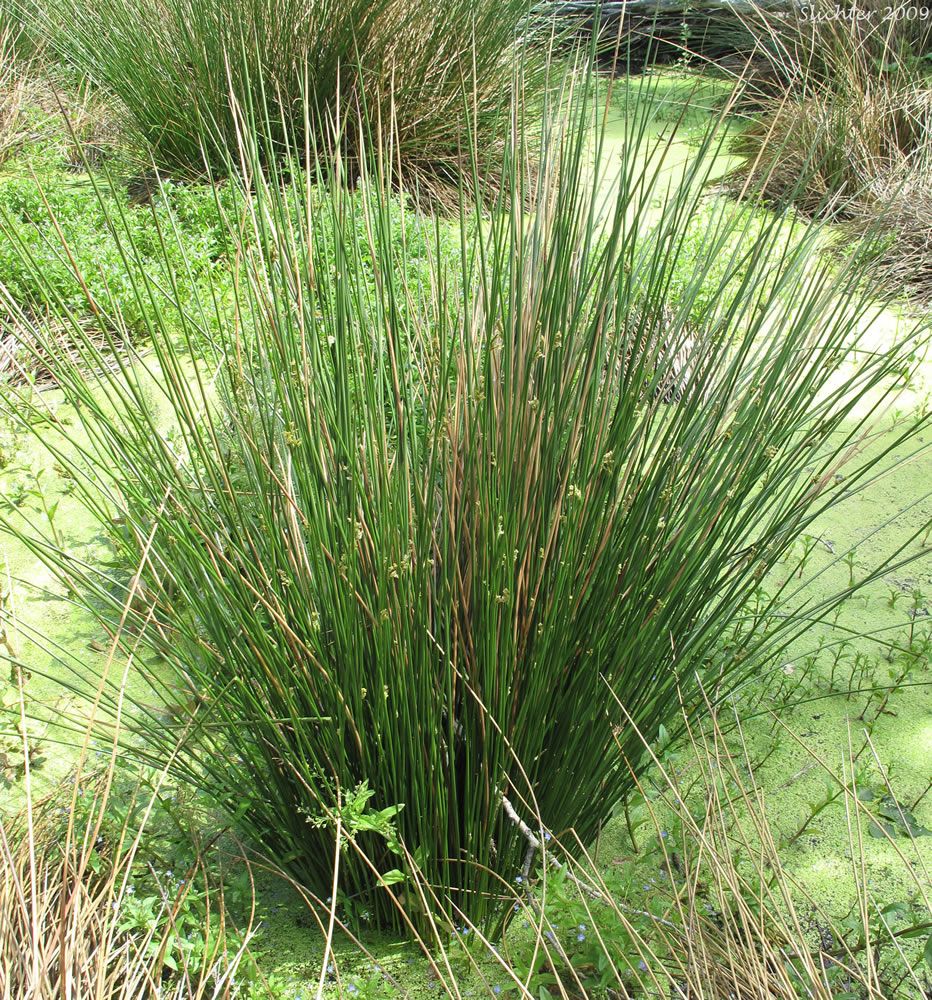
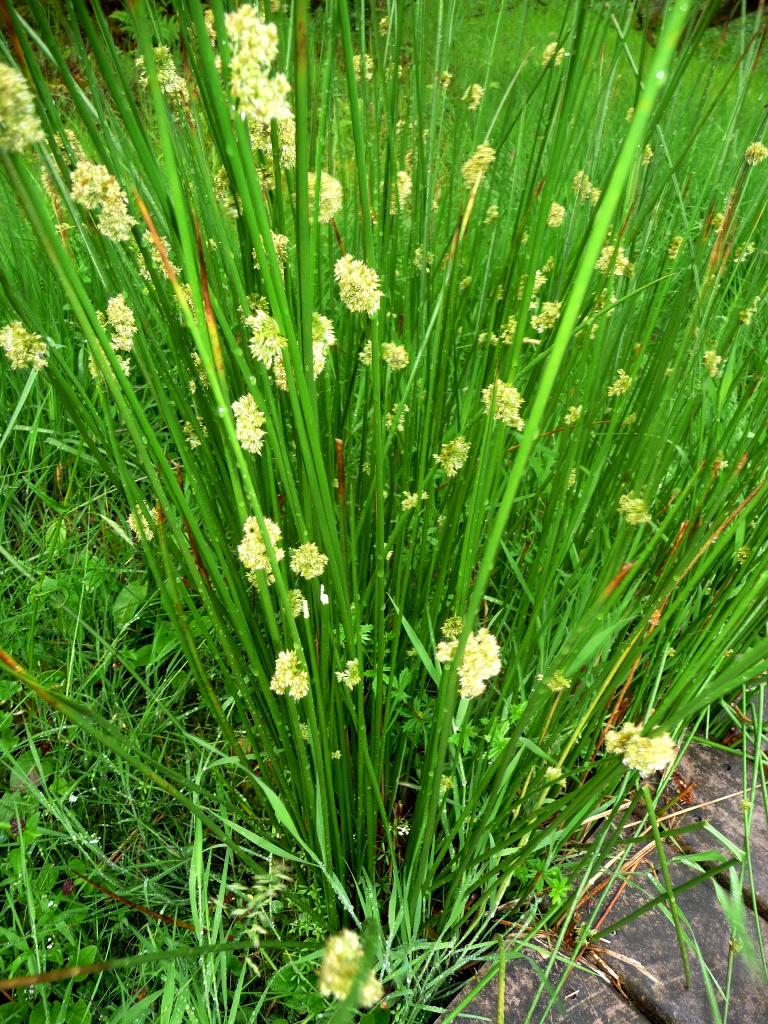
Botanical Name: Aegopodium podagraria
Common Name: bishop's weed, goutweed
Family: Apiaceae
Distribution/Origin: Eurasia
Leaf: trifoliate, lobed leaflets, bright green, ternate, serrate margins
Bud: basal
Flower: umbels, terminal with rays of 15-20 small white flowers, pollinated by many different insects, blooms May-June
Fruit/Seed: small, long curved styles
Stem/Bark: erect, hollow, grooved, triangular stems, rhizomatous
Size: 1’ height, 1’ and beyond spread
Habit: aggressively spreading, creeping
Form: mounding
Soil conditions: average, adaptable,
Moisture: dry to medium
Sun: full sun to partial shade
Exposure: foliage will scorch if kept in hot dry sun
Landscape use: ground cover, large areas you don’t care about, contained areas
Notes: extremely invasive, plant within contained areas, deadhead flowers before they go to seed to prevent mass spreading

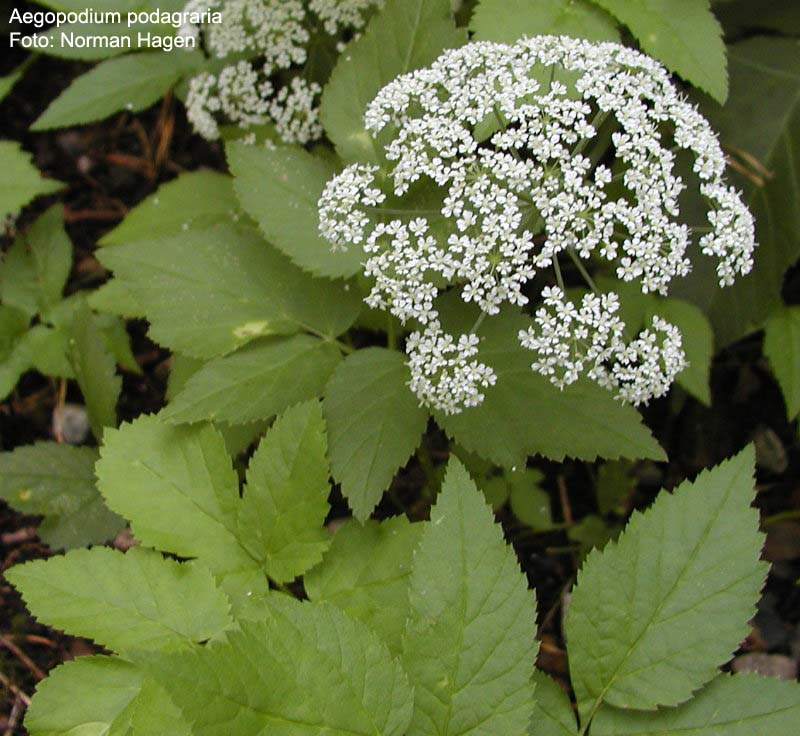
Botanical Name: Fallopia japonica
Common Name: Japanese knotweed
Family: Polygonaceae
Distribution/Origin: Asia
Leaf: truncate leaf base, acute drip tip, leathery texture, roundly obtuse, dull green
Bud: alternate
Flower: floriferous panicle, white, blooms Aug-Sept
Fruit/Seed: white or brown capsules
Stem/Bark: red to brown stems, rhizomatous
Size: 4-10’ height, 3-5’ spread, aggressively spreading
Habit: upright
Form: rounded, oval-vertical
Soil conditions: average, adaptable
Moisture: wet to dry
Sun: full sun to partial shade
Exposure:
Landscape use: winter interest, effective at smothering out unwanted plants
Notes: highly evolved plant, adapts to all types of resistant
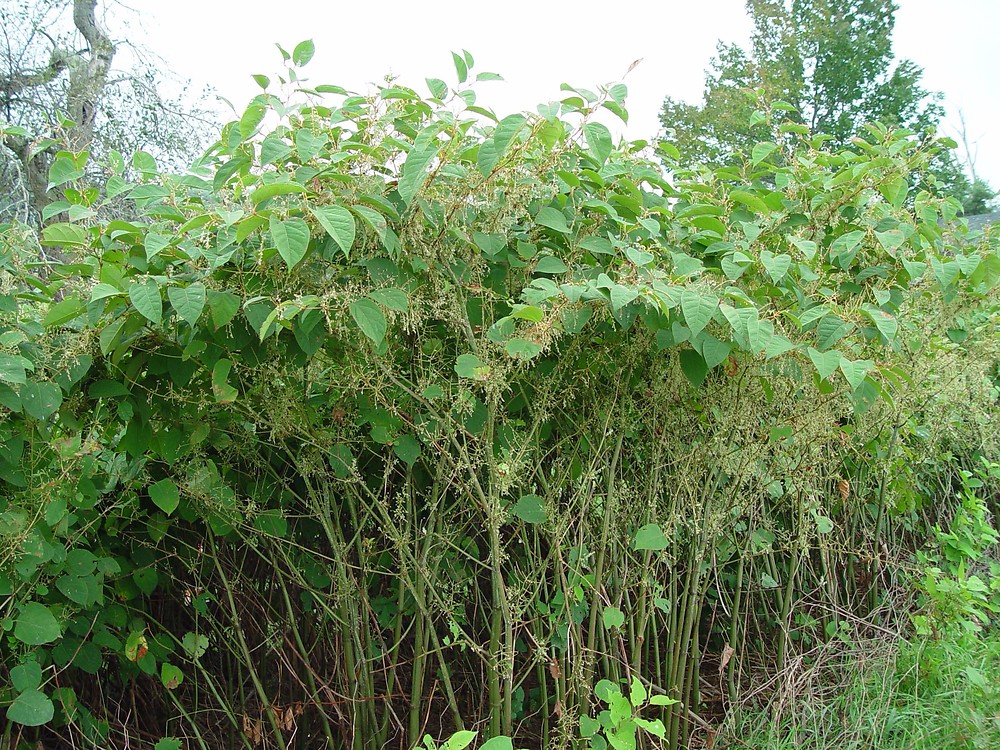
Botanical Name: Rumex acetosella
Common Name: sheep sorrel
Family: Polygonaceae
Distribution/Origin: Europe
Leaf: sagittate, bright tasty green, pinnate venation, glabrous surfaces, ovate in shape, hastate bases, acuminate tips with entire undulated margins
Bud: basal
Flower: rusty red racemes, blooms April-May
Fruit/Seed: brown achene, not showy
Stem/Bark: red tinted deeply ridged stems,
Size: less than 1’ height, up to 1’ spread
Habit: horizontally spreading
Form: mounded, round
Soil conditions: average, well drained
Moisture: moderate
Sun: full sun to partial shade
Exposure:
Landscape use: herb, attracts wildlife/insects, filler, container planting
Notes: extremely invasive, use responsibly
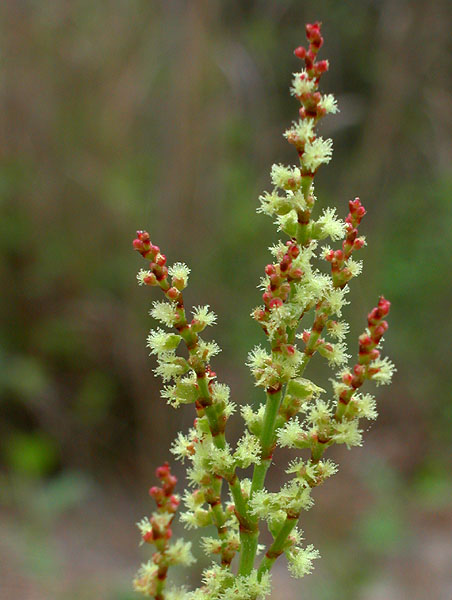
Botanical Name: Ranunculus repens
Common Name: creeping buttercup
Family: Ranunculaceae
Distribution/Origin: eastern Canada
Leaf: trifoliate, compound, ovate with pinnate venation, pinnately lobed margins, acute apices, auriculate bases
Bud: basal
Flower: dainty yellow blooms, simple, 5 petalled, solitary, perfect, June-Aug blooming
Fruit/Seed: achene, aggregate fruit
Stem/Bark: stolons, runners
Size: .5’ height, 1-2’ spread
Habit: aggressively spreading
Form: low growing, mat-like
Soil conditions: average, adaptable
Moisture: moist
Sun: full sun to partial or deep shade
Exposure: prefers moist wet areas
Landscape use: large areas, erosion control, wetland bogs
Notes: really, don’t plant this ever


Botanical Name: Lithodora diffusa
Common Name: lithospermum
Family: Boraginaceae
Distribution/Origin: Europe
Leaf: simple, leathery, pubescent surfaces, dark green, elliptic-linear to oblong, obtuse-rounded apices, truncate bases with entire margins (curved down)
Bud: alternate
Flower: blue blooms, floriferous cyme, 5 petaled, salverform corolla, blooms April-August
Fruit/Seed: nut, schizocarp
Stem/Bark:
Size: up to 1’ height, 5-7’ spread
Habit: spreading, twiggy
Form: creeping, mat-like, weeping
Soil conditions: alkaline soils, well drained, average
Moisture: low
Sun: full sun
Exposure:
Landscape use: rock garden, ground cover, walls, pathway borders, perennial beds, alpine garden, group or mass planting, mixed shrub border, small garden space
Notes:


Botanical Name: Kolkwitzia amabilis
Common Name: beauty bush
Family: Caprifoliaceae
Distribution/Origin: central China
Leaf: simple, pinnate venation, soft flexible, pubescent to tomentose surfaces, green in color, ovate with acuminate apices, attenuate bases, entire margins with serrate edges
Bud: opposite
Flower: panicle like corymb, perfect, 5 petals fused, tubular corollas, showy pink-white with yellow-orange throat, blooms May-June
Fruit/Seed: brown capsule
Stem/Bark: exfoliating, multi-stemmed trunk, grey-brown
Size: 6-10’ height, 10-13’ spread
Habit: horizontal, bushy
Form: loose vase
Soil conditions: humus rich, well drained
Moisture: low, moderate
Sun: full sun to partial shade
Exposure:
Landscape use: group or mass planting, mixed shrub border, specimen plant
Notes:

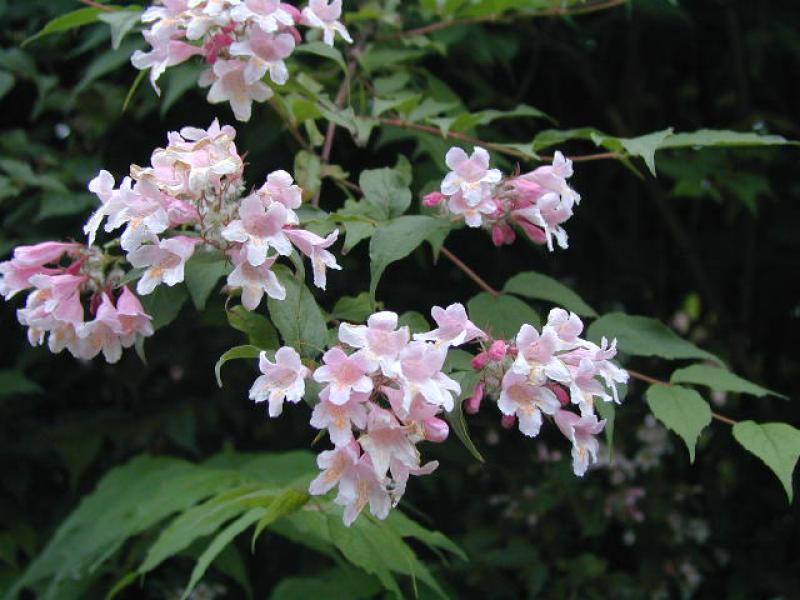
Botanical Name: Microbiota decussata
Common Name: Siberian cypress
Family: Cupressaceae
Distribution/Origin: Europe
Leaf: foliage goes bronze in winter, scale like
Bud:
Flower: male cone
Fruit/Seed: cone, winged seeds
Stem/Bark: red to brown, exfoliating
Size: 1-2’ height, 6-10’ spread
Habit: horizontal
Form: oval-horizontal
Soil conditions: well drained, average
Moisture: moderate
Sun: full sun
Exposure:
Landscape use: fall interest, group or mass planting, winter interest
Notes:
Botanical Name: Genista pilosa ‘Vancouver Gold’
Common Name: gold flash broom
Family: Fabaceae
Distribution/Origin: BC, Europe, garden origin
Leaf: simple, pinnate venation, soft flexible, glabrous, dark green, oblanceolate, acute apices and bases with entire margins
Bud: alternate
Flower: floriferous raceme, 5 petals, bilabiate, showy yellow, blooms April
Fruit/Seed: legume
Stem/Bark: green, tan to brown
Size: up to 1’ height, 3-5’ spread
Habit: dense, horizontal, spreading
Form: creeping, mat like, mounded
Soil conditions: well drained, average
Moisture: moderate
Sun: full sun
Exposure:
Landscape use: group or mass planting, rock garden, small garden space, spring interest
Notes: nitrogen fixing root nodules
